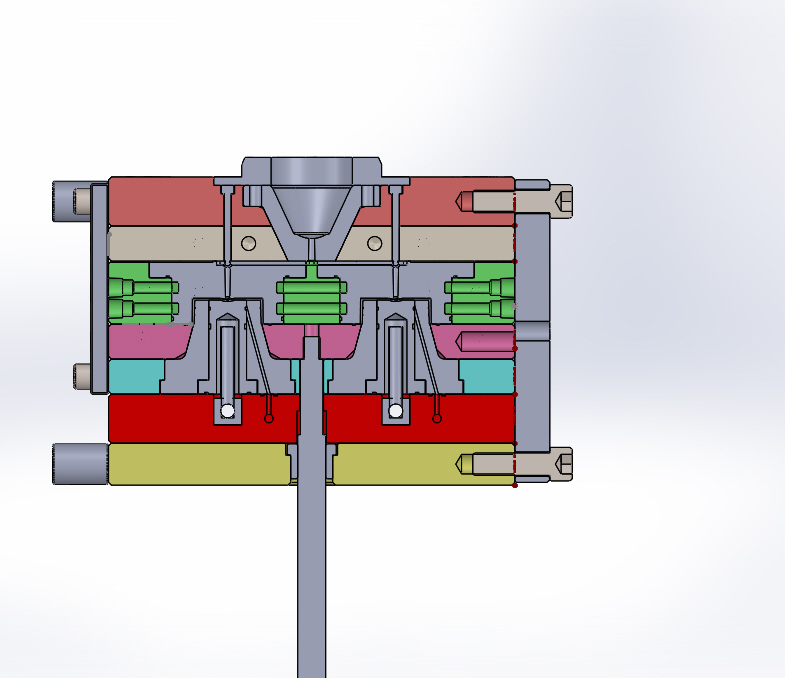- Home
- Lean Principles
- Machine Selection
- Mold Design
- Mold Interlocking
- Mold Making
- Plastic Material Technology
- Molding Process
- Plastic News
- What's New
- Privacy Policy
- Disclaimer
- Site Map
- Poll
- Polishing
- 3D Rapid Prototyping
- Molding Companies
- Contact Us
- Proven Thinwall Packaging Mold Designs For Sale
- MOLD WEIGHT CALCULATOR
- HOT RUNNER VERSUS COLD RUNNER
Estimating Cycle Time
Estimating cycle time in injection molding can be difficult because every injection molding company has a different way of doing things. Different levels of operator training and machine capability play a significant role in cycle time.
Material selection and part design also have an influence.
Part Design
The wall thickness of a part will directly affect the cycle time; thicker walls create longer cycle times while thinner walls create shorter cycles that’s why thin wall molding has cycle times in the 2 to 5 seconds range. Click here to learn more about thin wall injection molding. The fact is, the part designer needs to make the wall thickness as thin and uniform as possible while still maintaining adequate strength in line with the application.
The height of a part also effects cycle time. The higher the part the further the machine platen has to open and the more time required to eject it off the mould core.
Mold Design
The cooling system within a mould is a heat exchange system. There must be a sufficient number of cooling channels and sufficient flow rate of cooling fluid (usually water) to be able to extract the heat energy out of the plastic part within a specified time – this is called the cooling time of the moulding process and this directly effects cycle time. Different injection mold designers will design cooling systems that have different capabilities. This means cycle times will be different when using different designers.
Another aspect of mould design that will directly effect cycle time is the ejector system. The ejector system should be rigid enough to remove the part off the mould core without delay. Slow moving ejectors will only add to cycle time unnecessarily. What’s more, it is important to know when to use ejector pins and when to use a stripper plate for ejection as there is a big difference in the cost of the mould.
The cycle time calculator does not take into consideration hydraulically or pneumatically operated moving slides and cores. This method will add considerable time to mould ejection.
Also, the use of compressed air in many applications is vital to achieving quick cycle times because this allows the vacuum between the part and the core to be removed before the ejector pins (or stripper plate) take over. Without air, ejection is slower and will likely cause quality issues such as part distortion.
Machine Capability
A moulding machine will affect the cycle time in a number of ways:
- New technology machines are faster than old technology machines.
- Machines that have been well maintained will be faster and more reliable than machines that have not been maintained.
- Smaller machines generally cycle faster than larger machines.
- Machines with toggle clamps will give shorter cycle times than machines with hydraulic clamping units because platen speed will be faster.
- All-Electric machines have the fastest platen speeds so cycle time will be the shortest (everything else being equal)
Temperature Controller
The temperature controller (chiller) needs to be able to extract the heat energy from the cooling fluid (usually water) fast enough to maintain mould temperature for the required cycle time.
Adequate flow rate is also essential so the pump must have sufficient power. Centralized systems can be inadequate especially when additional moulding machines are installed without regard to temperature controller capacity.
Technician Capability
Ask 5 different technicians to set the same mould and you will probably get five different cycle times.Different technicians have been trained differently and have different experiences and understandings so the chance of variation is huge.
Runner System
When estimating cycle time, the type of runner system will play a role. Hot runners and insulated runners (thick runners) are faster than cold runners (used in 2 plate and 3 plate moulds). This is because there isn’t a runner to eject between each cycle and the injection time is less since the flow length is shorter.
Whats more, hot runners and insulated runners are not affected by cooling time whereas cold runners, when too large, require more cooling time than the part needs.
Cycle Time Calculator
Use the following cycle time calculator for general purpose molding to get an estimation keeping in mind that the points above can have considerable influence. This calculator is to be used as a guide and the results are not guaranteed.
It accounts for parts with wall thicknesses between 0.8mm and 5.0mm (0.032 and 0.196 inches).
Click here to read about our Mold Design Services
| Select Unit | |
| Mold runner type | |
| Part Information : | |
| Nominal wall thickness | |
| Length or Diameter | |
| Width (zero if round part) | |
| Height (relative to mold height) | |
| Molding machine size(tons) | |
| Cycle time: Seconds | |
Return from Estimating Cycle Time to Plastic Injection Molding Machine





